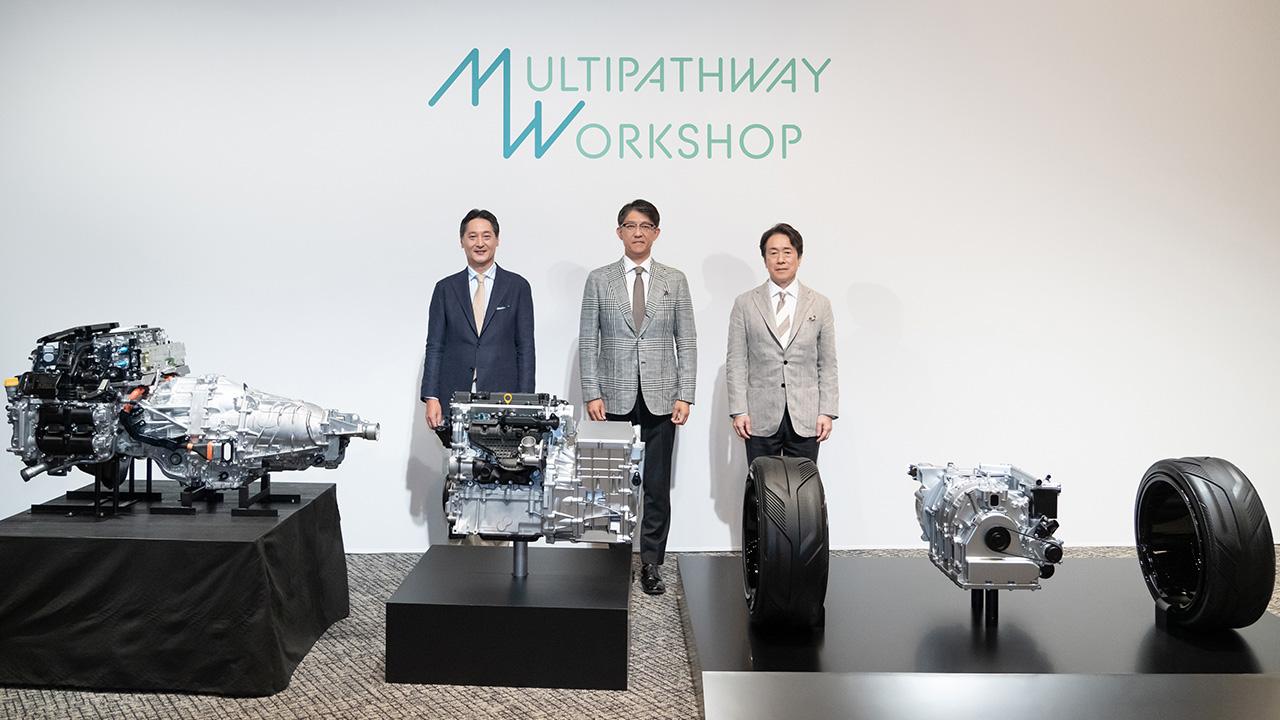
The three companies have long engaged in friendly rivalry over engines. Recently, their leaders came together to announce new developments for the electrification era.
“Navigating this great transformation with flexibility and expandability” Subaru President Atsushi Osaki
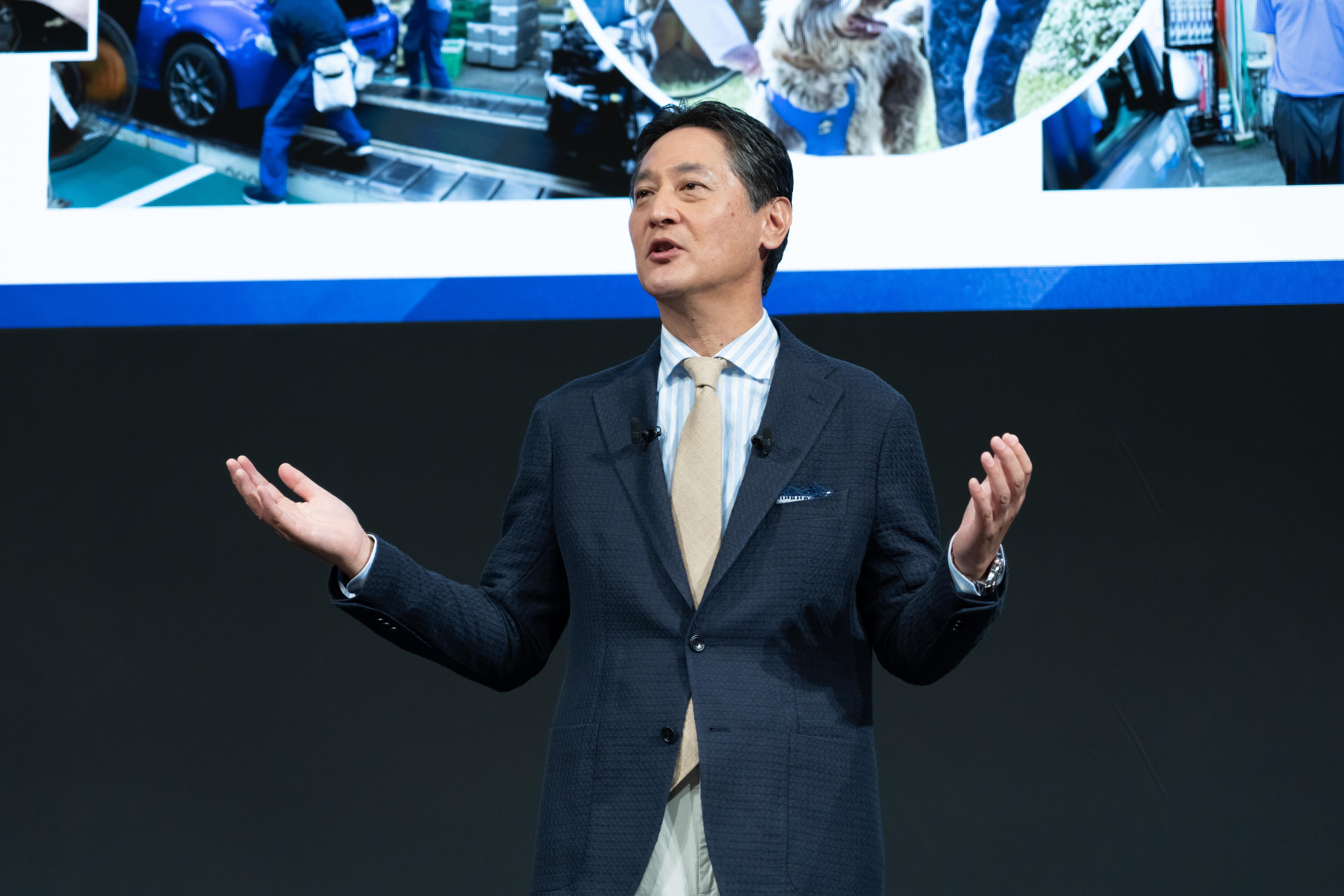
Thank you, Mr. Sato. Hello everyone, I am Atsushi Osaki from Subaru.
It gives me great pleasure to be part of this event today with our like-minded peers at Toyota and Mazda, Mr. Sato and Mr. Moro. I am also very excited to share with you my thoughts about the future of engines.
At Subaru, our vision is “delivering happiness to all.” While the company was originally created to make customers happy, our mission is to bring happiness to all people, from our suppliers, employees, shareholders, and other stakeholders to local communities in Japan, America, and every other country where we operate, as well as our children, grandchildren, and future generations.
Part of these efforts to deliver happiness to all, including future generations, is our commitment to creating a carbon-neutral society. To ensure that we preserve the Earth’s precious environment for future generations, along with the rest of the auto industry, we must make steady, realistic progress towards carbon neutrality across the entire lifecycle of our vehicles in accordance with the actual conditions of individual countries.
There are diverse technologies capable of achieving carbon neutrality. The technologies we choose are merely means to an end, and we must flexibly accommodate various circumstances and requirements.
In this context, at Subaru, we are navigating this period of great transformation by focusing on flexibility and expandability.
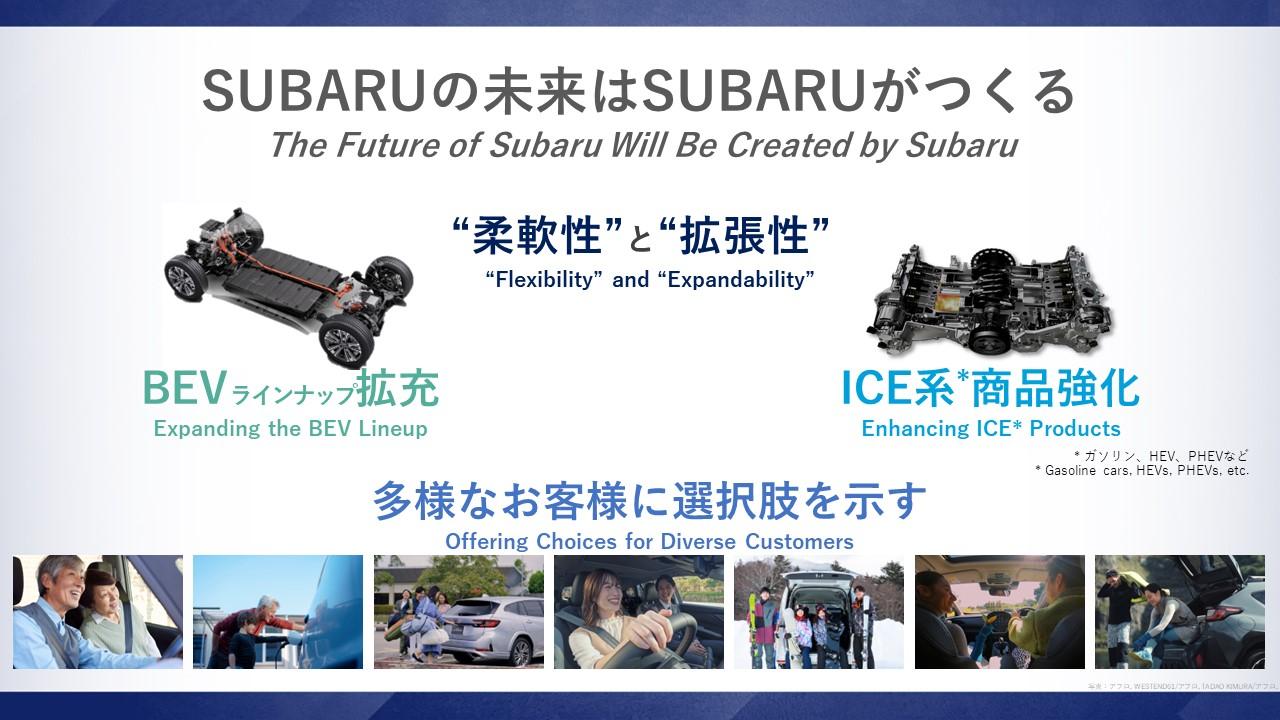
It goes without saying that we are developing and advancing our BEV-related technologies and services. Yet, ultimately, it is up to the customer to decide what kind of car is best for them. As we work to make our automotive future carbon neutral, we recognize the need for flexibility and diversity, offering customers and society choices that embody the Subaru difference.
At Subaru, internal combustion engines mean horizontally-opposed engines.
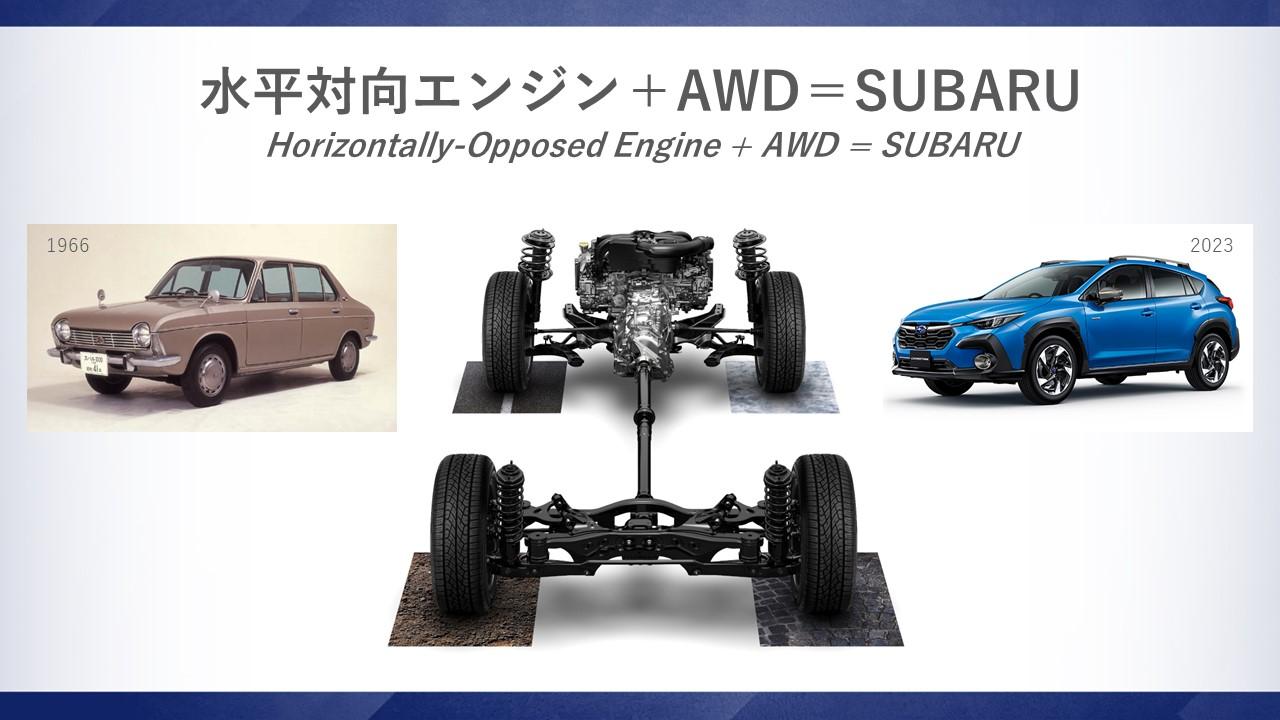
The company’s pioneers regarded the longitudinally mounted horizontally-opposed engine as the logical and ideal source of power for automobiles. This has developed into Subaru’s unique Symmetrical AWD (All Wheel Drive) system, with superior packaging that takes advantage of a symmetrical powertrain layout and the features of horizontally-opposed engines—lightweight, compact, low center of gravity, reduced vibration, and safety in collisions. We have continued to refine this technology over many years.
Both then and now, we’ve been driven by the desire to offer customers greater enjoyment and peace of mind forever.
This commitment has delivered happiness to many customers and enabled cars to enrich their lives.
We are proud that we have been able to deliver happiness to customers around the world.
The combination of horizontally-opposed engine and AWD is about more than just history or originality; these are the core technologies that underpin our cherished values of “enjoyment and peace of mind,” and have become the symbol and icon of Subaru.
That is why we continue to focus on these two technologies: the horizontally-opposed engine and AWD. While creating battery EVs with a distinctly Subaru flavor, we will also continue catering to those customers who have developed strong trust and an enduring love for our horizontally-opposed engines and AWD.
We will hone our car electrification technologies to make our horizontally opposed engines shine in the carbon-neutral era. On the other hand, we will continue to hone horizontally opposed engines themselves to utilize carbon-neutral fuels.
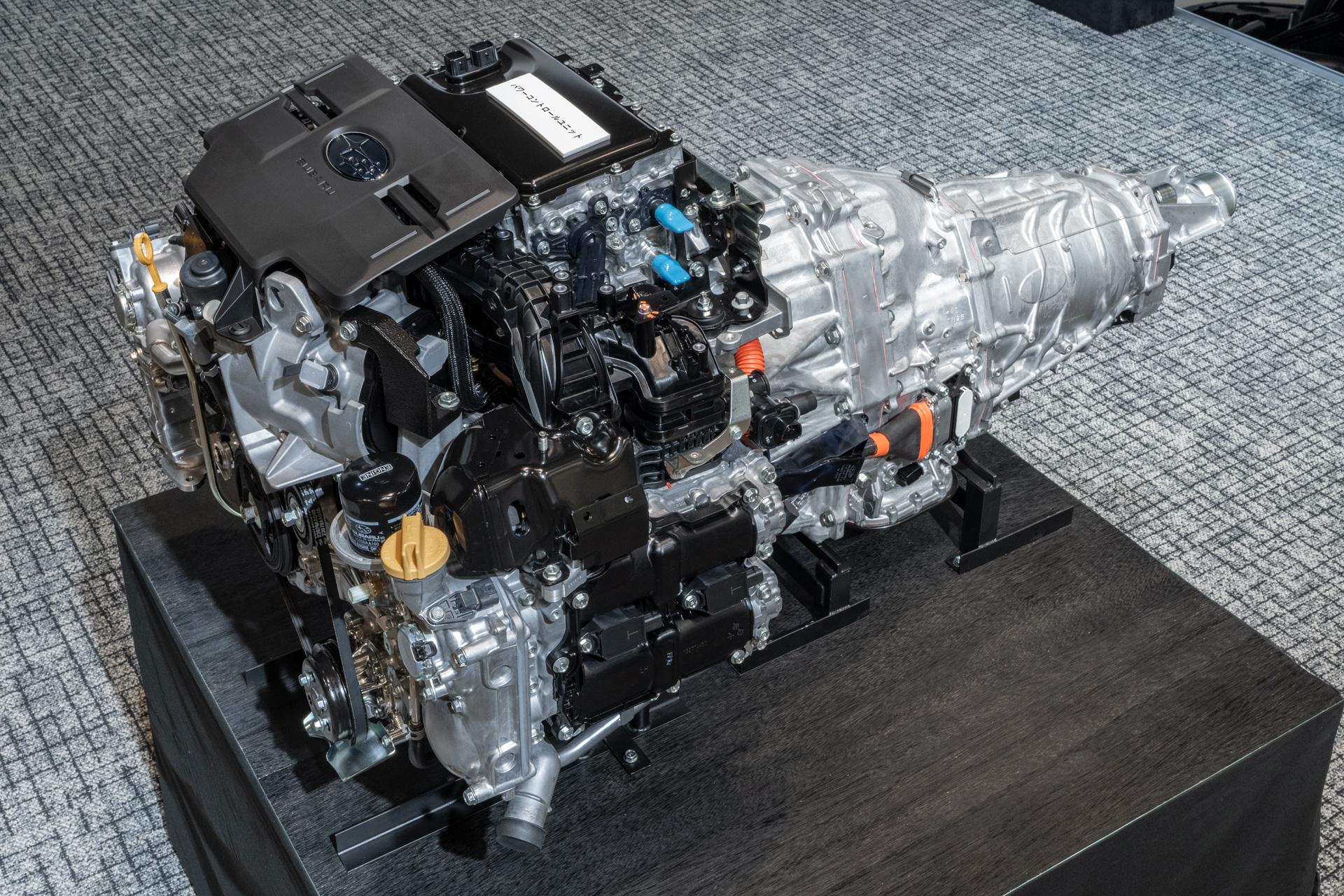
Japanese carmakers, including our three companies, have already gained a great deal of expertise by working together on carbon-neutral fuels in Super Taikyu racing, and we will continue this research toward practical application.
As President Sato mentioned, Subaru is also eager to collaborate in efforts to promote the adoption of carbon-neutral fuels.
The challenge of creating a carbon-neutral society needs to be tackled not just by the three companies here, but by all of Japanese industry and society. In the auto sector, we are striving to ensure that no one is left behind—not only finished vehicle manufacturers like us but also the entire supply chain that sustains our industry, along with all our peers working in related industries. Similarly, we want to honor people’s diverse preferences and ensure that no customer is left behind.
Subaru is here today because we endorse the call to work together on building the future, joining forces to advance engines where we can while competing vigorously in other areas, all with the aim of creating a carbon-neutral society.
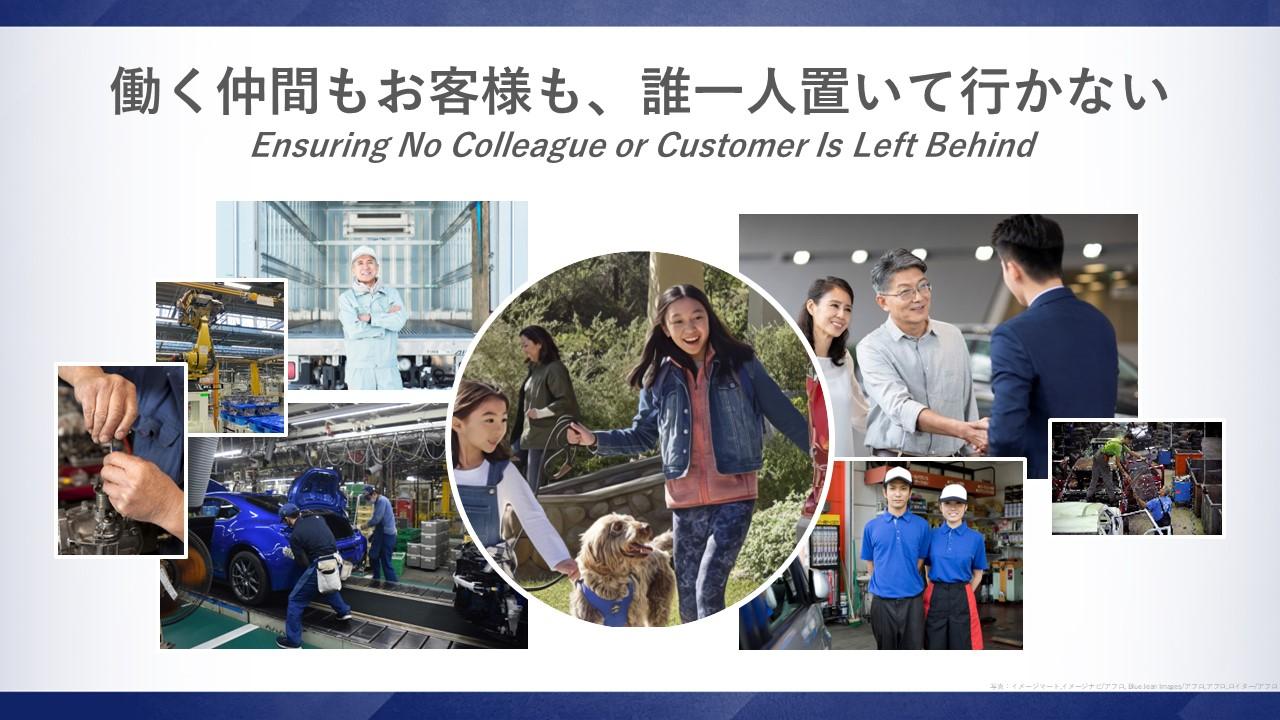
The future of Japanese carmaking and Subaru’s carmaking still has much to offer.
Thank you very much. Next, Mr. Moro from Mazda will speak about the future of engines.

